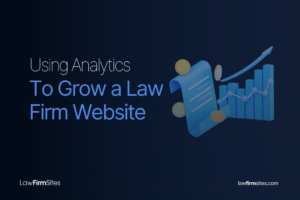Email Marketing Funnels for Attorneys

Email remains one of the most reliable ways for law firms to nurture interest into consultations and long‑term relationships. Done well, an email marketing funnel guides potential clients from awareness to trust and, ultimately, to a scheduled meeting. This article explains what an email marketing funnel is for attorneys, how it works, and how to set one up responsibly. The goal of this guide is to help your firm communicate clearly, ethically, and at scale.
What Is Email Marketing for Lawyers?
Email marketing for lawyers is a permission‑based method of communicating with people who have asked to hear from your firm, subscribers, clients, referral partners, and professional contacts. The “funnel” is the sequence of messages that moves a person through stages: discovery, education, evaluation, decision, and advocacy. In the legal context, the primary conversion is not a direct purchase but a meaningful action such as scheduling a consultation, requesting a case evaluation, or referring a friend. Because legal services are high‑trust and often high‑stakes, the funnel emphasizes education, empathy, and clarity rather than aggressive promotion, which is usually seen in more common marketing practices.
A law firm email funnel typically includes: a lead magnet (for example, a checklist or short guide), a welcome series that sets expectations, ongoing educational newsletters, behavior‑based follow‑ups, and post‑matter communications that encourage reviews and referrals. Each step should respect professional responsibility rules, protect confidentiality, and avoid creating an unintended attorney‑client relationship before a formal engagement.
How Does Email Marketing Work for Law Firms?
The engine behind a strong funnel is value. People subscribe because your firm offers helpful resources, and they stay because the messages continue to solve problems or answer questions. A typical path looks like this:
Part 1: Awareness: A prospect finds your website through a search engine, social media, a webinar, or a speaking event. This provides them with a clear invitation to visit your site and content pieces.
Part 2: Opt‑in: The person joins through a compliant form that outlines what they will receive. Use double confirmation where feasible to reduce spam and protect deliverability.
Part 3: Welcome: This part is a short sequence that explains which individuals you help, plaintiffs, defendants, or both, what readers can expect, and how to get in touch. Include disclaimers such as “This email does not create an attorney‑client relationship.”
Part 4: Nurture: These regular messages deliver guidance tied to practice areas: “What happens after a minor car crash,” “How to prepare for a child custody hearing,” or “The first steps after a workplace injury.”
Part 5: Consultation: Involves calls‑to‑action that invite readers to request an intake call or schedule a meeting. The invitation should be clear, respectful, and not pressuring. The last thing you want is to annoy your leads by sounding like the usual marketing pitch.
Part 6: Post‑matter: After resolution, send a thank‑you, a request for feedback or a review, and a message explaining how you support clients after the case.
Part 7: Review, Referral, and Reactivation: Periodic check‑ins keep the leadsi engaged, share new resources, and encourage referrals where permitted by your jurisdiction’s rules.
Additionally, ethics and compliance sit beside every stage. It is important to use accurate sender information, a physical mailing address in your footer, and an easy unsubscribe link to align with the Controlling the Assault of Non‑Solicited Pornography and Marketing Act (often called the CAN‑SPAM Act). Add clear disclaimers, and make sure to avoid promises about results, and keep state bar advertising rules in mind.
How to Implement an Effective Email Marketing Strategy for Your Law Firm
Design a Clear Plan
Begin with a concise strategy document that defines audiences, goals, content themes, and timing. Map each audience segment, potential clients, existing clients, and referral partners to the messages they need most. For instance, personal injury prospects want step‑by‑step guidance after an accident, while referral partners want updates on your practice focus and what a good referral looks like. Establish a publishing rhythm (for example, a monthly newsletter plus a quarterly deep‑dive) and write down the primary action you want from each email.
Create a simple content calendar that tracks the welcome series, newsletters, seasonal topics, and automated follow‑ups. Use consistent sections such as “What to know,” “Checklist,” “Recent matter insights,” and “Resources”, so readers learn where to find value quickly. Keep content concrete and local where appropriate, but avoid legalese. Short paragraphs, descriptive headings, and plain language improve comprehension and inbox performance.
Utilize Email Marketing Tools
Choose a reputable email platform that supports segmentation, automation, deliverability monitoring, and consent management. Look for features such as accessible templates, conditional content (so different segments see different examples), and native integration with your website forms and your Customer Relationship Management system.
Automations to set up on day one include: a multi‑email welcome series, a lead magnet delivery sequence, reminder messages for people who started but did not complete an intake form, and post‑consultation follow‑ups. Keep each automation short and useful; a three‑to‑five‑message sequence is often enough to establish trust without overwhelming the reader.
Build an Email Prospect List
Quality matters more than raw volume. Invite readers through useful resources like checklists, mini‑guides, or recorded webinars. Place opt‑in forms in visible but respectful locations: homepage feature area, blog sidebar, and the end of articles. Use precise copy that tells people what they will receive and how often. If you speak at events or host webinars, include a sign‑up link on the slide deck and in your follow‑up materials.
Do not upload purchased lists. Instead, import your firm’s contacts from previous matters, alumni clients, and allied professionals after ensuring you have permission to email them. Segment as you build: practice area interest, stage of the journey (prospect, current client, alumni), and referral partner type (accountants, physicians, real estate agents, community leaders), as this allows you to send by relevance rather than blasting everyone with the same message.
Start Creating and Sending Your Emails
Personalization begins with genuine understanding. Use the recipient’s name and reference the topic they requested, but go further by aligning each message to the specific problem they face. Avoid generic subject lines like “September Newsletter.” Instead, write purposeful lines that answer a real question or promise a clear outcome: “Five steps to take after a parking lot crash,” “What to bring to your first family law consultation,” or “A short guide to wage claims in your state.”
Within the email, lead with a brief summary and a helpful action item. Link to a fuller article, a brief video, or a downloadable checklist. Use strong but courteous calls‑to‑action such as “Schedule a brief call,” “Request a case review,” or “Reply with your question.” Keep images optimized and ensure that the overall design reads well on mobile devices. Additionally, maintain an empathetic tone; legal problems are stressful, and your message should establish calmness.
Monitor Your Results
Be sure to track the fundamentals, such as delivery rate, open rate, click‑through rate, reply rate, and consultation bookings. Beyond the inbox, measure the number of new matters that mention your emails during intake. Use simple A/B tests to improve subject lines, preview text, and calls‑to‑action.
It is also a good idea to regularly clean your prospect list. Remove addresses that bounce, suppress contacts who have been inactive for a long period, and honor all unsubscribe requests promptly. Strong list hygiene protects your sender reputation and improves the experience for engaged readers. Document your compliance practices and refresh your templates to reflect any updates to advertising or privacy rules in your jurisdiction.
Start establishing good leads with ease
An effective email marketing funnel helps attorneys educate the community, build trust patiently, and turn interest into scheduled consultations without pressure. With a clear plan, the right tools, relevant content, and steady measurement, your firm can run a program that serves readers and supports your intake goals.
Our resources at Law Firm Sites are a helpful place to start, and our guides and examples will definitely aid in refining your next campaign.
Did you like this post? Here are some others you might enjoy:

For most law firms, growth depends on being visible at the exact moment a potential client searches for help. Pay‑per‑click…

Strong legal marketing rewards depth. When potential clients face high-stakes decisions, they search for thorough, trustworthy guidance that clearly explains…

Data is the most reliable guide for growing a law firm website because it shows what clients actually search, where…

